Select MONITORING > DEVICE to display the Devices page, and select a network on the top to filter devices.
The AC List displays basic device information, including online/offline status, SN, alias, management IP, MAC, public IP, network, firmware version, offline time, model and description.
The AC List automatically refreshes every minute. Click  to enable/disable the auto refresh function.
to enable/disable the auto refresh function.
Above the list are the Add, Web CLI, eWeb and Upgrade functions. Click  to display Reboot, Export and Delete functions. For more information, refer to Basic AC Operations.
to display Reboot, Export and Delete functions. For more information, refer to Basic AC Operations.
The Search function supports fuzzy queries based on the serial number, alias and description.

Click the serial number in the device list to open the details page for a single device.
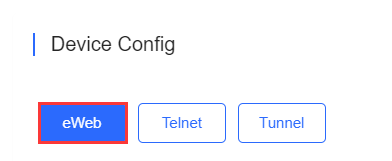
Click eWeb to open the eWeb system in a new window.
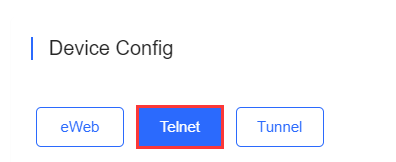
Click Telnet to connect AC to by Telnet protocol. Enter CLI commands to configure the AC.
The port panel imitates the actual AC panel, displaying the port type and status.

Basic information displays the alias, model, SN and other information. Alias, MGMT password and description can be edited.
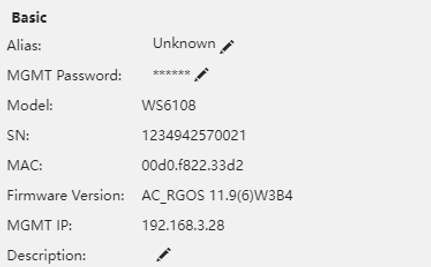
CPU & memory usage are displayed here.

Device status displays online status, online clients and active clients.

Connectivity refers to the connectivity (online status) between AC and Cloud Service within a period (1 day or 7 days).

CPU/memory summary over the 24 hours are displayed.

The device log records the historical operations, including online/offline, restart, upgrade and VLAN change, and supports queries based on log type and time.

The Config log records the historical configuration delivery, and supports queries based on status and time.

Uplink & downlink speed of port are displayed. This page supports queries based on day, week and month. Click  to refresh the summary.
to refresh the summary.
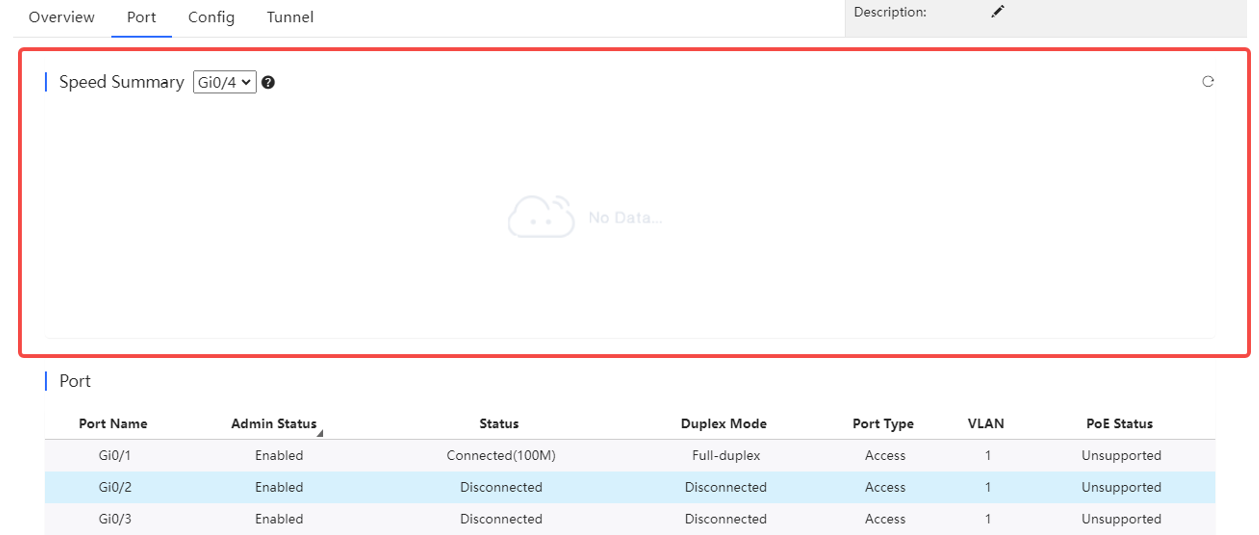
Port information displays port name, VLAN etc.
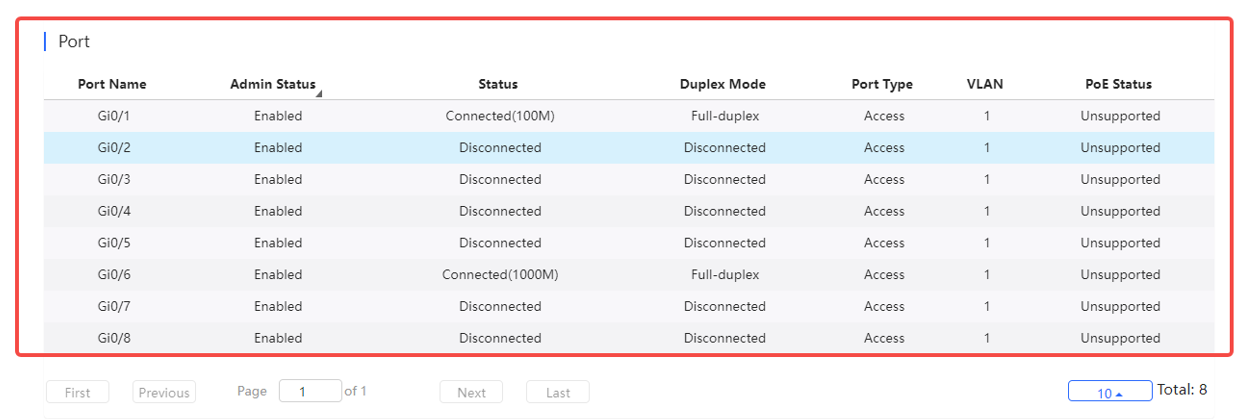
The backup records include configuration file name, size, time, mode and MD5.

Step 1: Click Current to display the current configuration.
Step 2: Click Back up in the Config Details page to back up the current configuration.
Step 3: Click Back up and then click OK in the message box to back up the current configuration.

Select one record, and click Download to download the configuration file.
Select one record, and click Restore to restore the current configuration.
Select one or multiple records, and click Delete to delete the backup record.
Select two records, and click Compare to compare the differences.
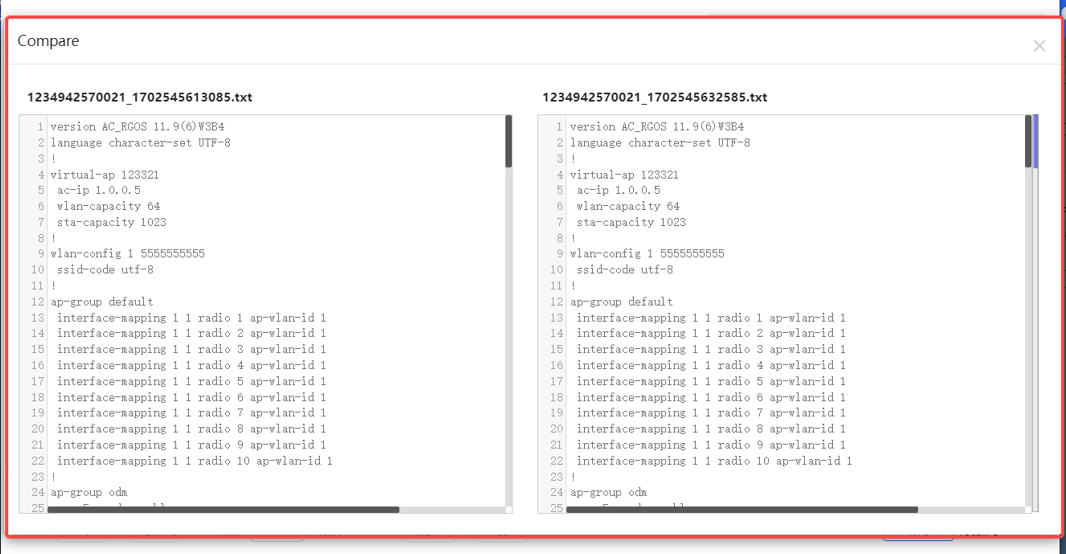
Select the tunnel type and click Create Tunnel. The tunnel types include Telnet, eWeb and SSH.
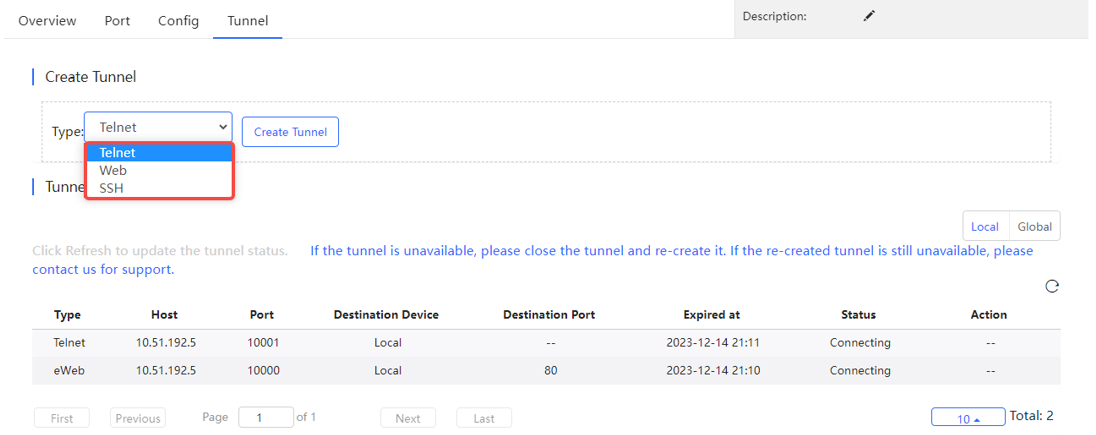
Tunnel information includes tunnel type, host, port, destination device, expiration time and status. Click Re-create in the Action column to re-create a tunnel.
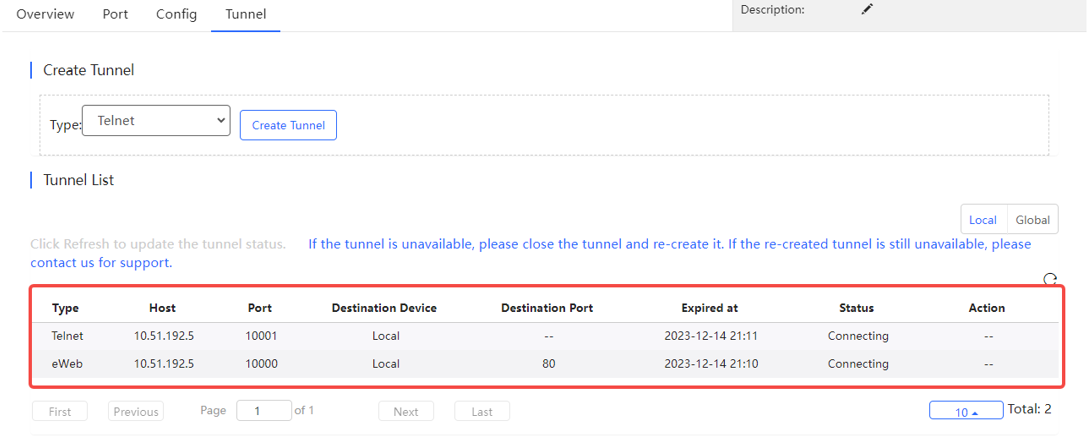
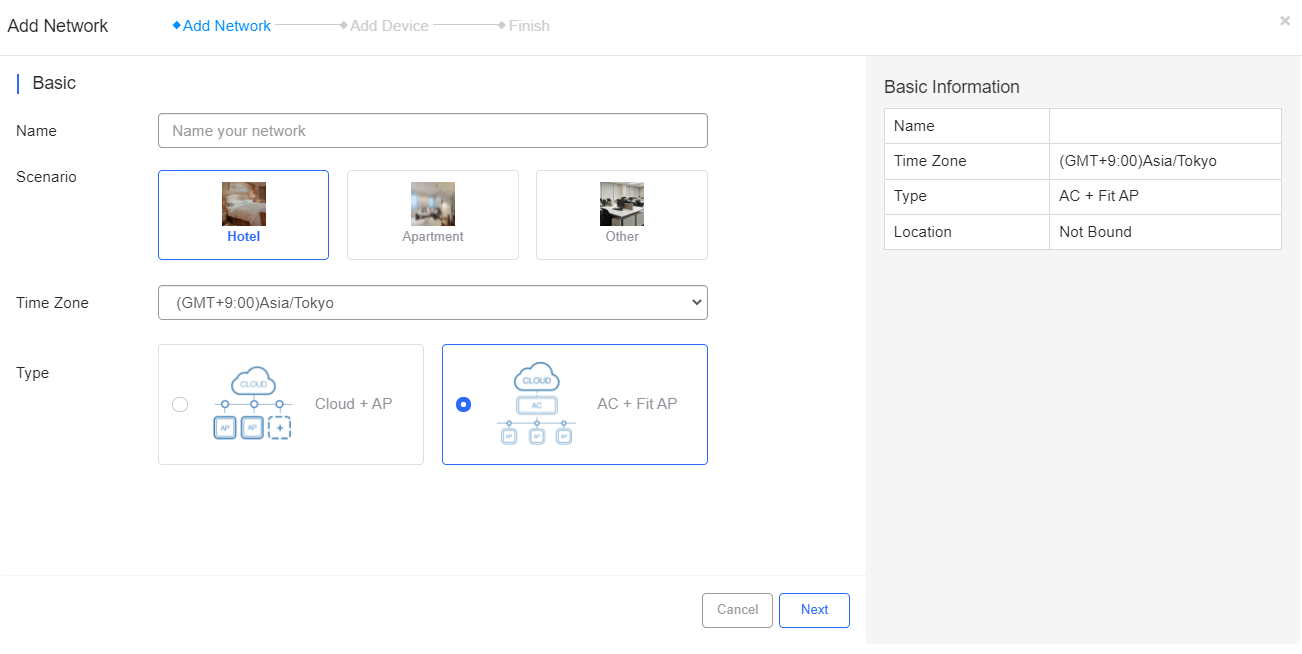
Select the network, and click Add. Then enter the SN and Alias, and click OK to add an AC to the network. Only one AC can be added to a network.


Select the device to be managed by CLI command, click Web CLI. The Web CLI page provides commonly-used CLI commands on the left. Click the command, or manually enter the command and click Send. Only one AC can be configured at a time.

Select the device and click eWeb. The system will connect to AC and automatically open the eWeb page in a new window.

If a tunnel is created successfully but the eWeb page does not automatically open, a message is displayed as below. The user can manually click the link to open the page.
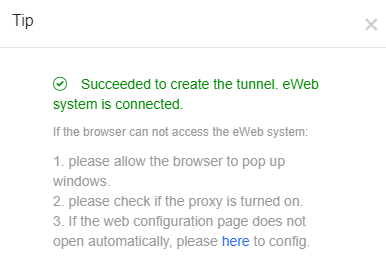
Select the device in the AC List, click More > Reboot and click OK.

Select the device in the AC List, click More > Export.

Select the device in the AC List, click More > Delete and click OK.

Click AP/STA List to display the AP and STA list.

全部评论